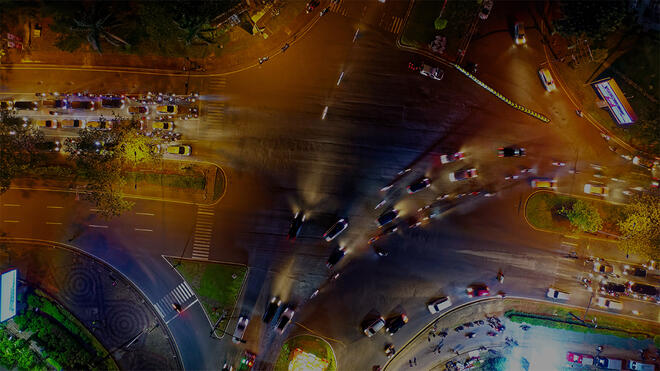Creating Safer, Greener Communities Using LED Streetlights in 2025

A Smarter Way to Light Safer, Greener Cities
Street lighting remains a major energy expense for U.S. municipalities, accounting for up to 40% of city electricity budgets in some cases. According to U.S. Department of Energy projections, widespread LED adoption could save over 1,400 terawatt-hours annually by 2035 across all lighting sectors — equivalent to the output of 160 large power plants. For street lighting specifically, municipal retrofits are demonstrating 50–70% energy reductions, giving cities a powerful opportunity to cut costs, improve safety, and meet climate goals simultaneously.
With LED streetlights 2025 technology and smart controls, municipalities can dramatically lower energy costs, reduce carbon emissions, and create safer public spaces. These upgrades are quickly becoming essential tools in building safer, more sustainable, and operationally efficient cities.
Smarter Streetlights for Safer Communities
Across the United States, cities investing in smart lighting infrastructure are seeing meaningful improvements in public safety, energy efficiency, and cost savings.
Here’s why LED upgrades matter:
- Enhanced Visibility: Bright, crisp LED light significantly improves safety for pedestrians, cyclists, and drivers.
- Reduced Energy Consumption: The energy-efficient nature of LED streetlights, especially when combined with lighting controls that can add as much as an additional 40% energy savings, is a game-changer for communities aiming to lower their carbon footprint. With a remarkable reduction in energy consumption compared to conventional high pressure sodium streetlights, LED streetlights demonstrate an unwavering commitment to sustainability.
- Crime Reduction: Recent meta-analyses show street lighting interventions can reduce total crime by approximately 14% in treatment areas compared to control groups. Localized implementations with optimized lighting design (e.g., brighter LEDs, strategic placement) have demonstrated reductions of up to 21–24% for specific crime types, particularly nighttime gun violence and property crimes.
- Boosted Energy Efficiency: Smart lighting controls can add 20–50% energy savings on top of LED retrofits through strategies like occupancy sensors and daylight harvesting. Advanced systems combining multiple controls achieve up to 54% savings when paired with LEDs.
- Lower Costs and Emissions: LEDs have longer lifespans, cutting down on maintenance costs and emissions from service vehicles.
Read the Blog to see how smart lighting transforms public safety
LED Streetlights and ESG: A Winning Strategy for Cities
Investing in LED streetlights 2025 isn’t just about operational savings — it’s a strategic move to advance Environmental, Social, and Governance (ESG) goals:
- Environmental: LEDs lower greenhouse gas emissions, reduce electricity demand, and support dark sky initiatives by minimizing unnecessary light pollution.
- Social: Well-lit, safer streets promote public health, improve accessibility, and create more inclusive communities.
- Governance: Smart lighting systems like UbiCell® UGU and UbiHub® AP/AI enable better resource management, data-driven decision-making, and measurable ESG reporting.
For municipalities serious about building resilient, sustainable communities, green public lighting projects offer both immediate benefits and long-term impact aligned with ESG strategies.
Lighting Management Systems: Unlocking Full Impact
While LED streetlights 2025 bring significant improvements, combining them with lighting management systems unlocks their full potential. Connected lighting solutions allow cities to:
- Dynamically adjust brightness based on time of day, weather, or emergency needs
- Extend LED lifespan by up to four additional years through optimized dimming
- Remotely monitor and maintain lighting networks, reducing operational costs and eliminating costly night patrols
- Minimize light pollution, preserving urban night skies and improving environmental health
Without intelligent lighting controls, cities risk missing out on the full climate, cost, and public safety advantages that smart LED systems can deliver.
Read the Blog to see how real-time monitoring is helping cities eliminate patrols and respond faster to outages.
What’s Next: Advancing Citywide Sustainability and Safety Goals
As cities look to modernize infrastructure and achieve ambitious climate and equity goals, smart LED lighting is emerging as a key solution. These upgrades help cities:
- Cut energy and maintenance costs, freeing up budget to reinvest in other sustainability and safety priorities
- Improve nighttime visibility and reduce crime through well-lit, thoughtfully designed streets
- Reduce emissions from both electricity use and unnecessary maintenance truck rolls
- Build smarter operations with connected infrastructure and real-time diagnostics
Whether you're focused on cost savings, climate action, or public safety, LED and smart lighting systems offer an essential foundation for the future of city planning.

